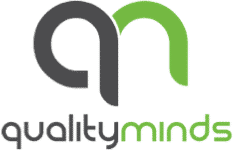We want to learn things that we actually need!
Group learning sprint “organizational development” at Siemens Digital Industries
Maybe you know this: when talking to colleagues, you suddenly come across a common interest: “I’ve always wanted to learn something about it too” or “Actually, we should all know more about it”. We have found a good solution for this: a group learning sprint.
The purpose of a group learning sprint
Finding fellow learners, the way we did at the beginning of the year in the group of agile and team coaches at Siemens Digital Industries, is already a great start! To be able to advise their customers comprehensively on the matter of change processes, the group wanted to broaden their knowledge in the field of “organizational development”. But where and how to start?
We figured out soon enough that a “classic” workshop or e-learning wouldn’t suit our purpose. The agile and team coaches didn’t want to waste time if the content and the learning process were not exactly what they needed.
“Instead of focusing entirely on theory, we wanted to learn hands-on application of the content in our projects and get direct feedback from the experts”, says Kerstin Bertels (Siemens).
The solution – a 12-week-long group learning sprint – was provided by a triumvirate of partners from Siemens Learning Organization, QualityMinds GmbH and Cormens. Two learning experts: Lothar Wüst (Cormens) and agile learning coach Manuel Illi (QualityMinds) supported and empowered the participants in analyzing their own learning goals and taking individual responsibility for the progress.
How does it work?
The process is slightly like a user story mapping and development cycles in a scrum team:
- We started with a preliminary survey in which all learners could anonymously describe their needs and prior knowledge.
- Based on the results of the survey, we kicked off the learning journey by creating a so-called teaching story mapping. Similar to user story mapping, here teaching and learning points (such as scope, depth, exact goal, implementation, etc.) were defined together by learners and experts.
- In the subsequent 12 weeks, the participants learned through a mix of peer-to-peer learning, self-study (approx. 2 hours per week) and moderated group sessions (1.5 hours per week). For example, organizational development analysis models were created, applied in projects and later discussed and reviewed in the group together with Lothar Wüst.
What is the added value of a group learning sprint?
The learners were able to design their learning journey in a self-determined manner right from the start. It was anything but a dry run – it helped learn exactly what one needs on a weekly basis and swiftly apply it hands-on. Ultimately, the process and method design were in the hands of the learning coach, who accompanied and moderated the learning process as a facilitator, organizer, coordinator, and communicator. Through the teaching story-based approach and the regular retrospectives, the learning journey resembled an organic growth, where one thing builds on the other.
The expert was able to gain a clear understanding of the needs and requirements through the mapping and the sprint structure in order to choose the right materials, exercises and practical application:
“At first, I was curious how much learning one can achieve during a 1.5-hour slot within a sprint”, says Lothar Wüst, organizational development expert and coach, “This experiment showed me that you can learn a lot in that time! I’m convinced that the high motivation of the participants and their prior knowledge contributed greatly to that. Teaching story mapping, which in the beginning seemed pretty time-consuming, turned out to be very useful thanks to its iterative adjustments and clear distinction of roles between the learning coach and me. Applying agile methods to learning was a very interesting and nice experience.”
After 12 weeks of working with teaching stories and providing good documentation from the group sessions the learners were more than satisfied with the results. The materials and case studies can be used and adapted in the future to help prospective learners at Siemens who have similar learning goals.
If you want to find out more about group learning sprints or even start a group sprint journey with your colleagues, get in touch with us at learning@qualityminds.de.


0 Comments